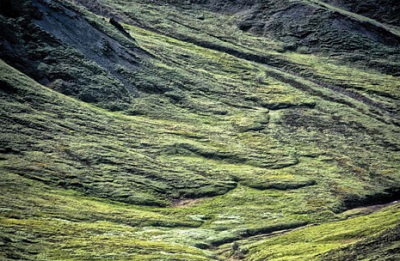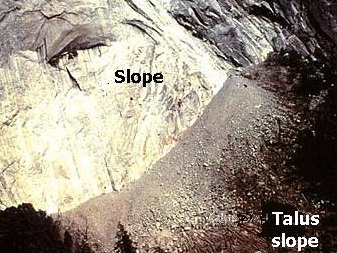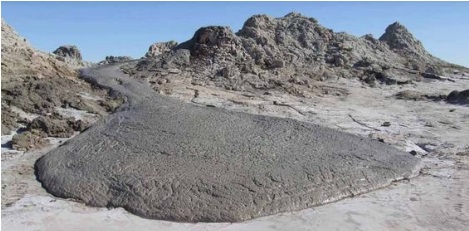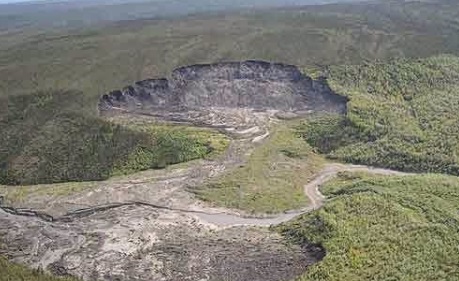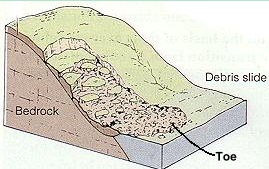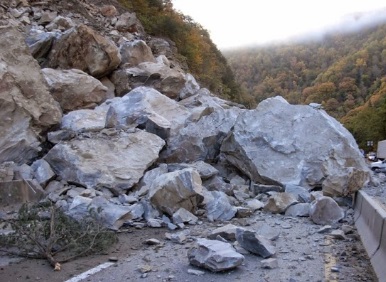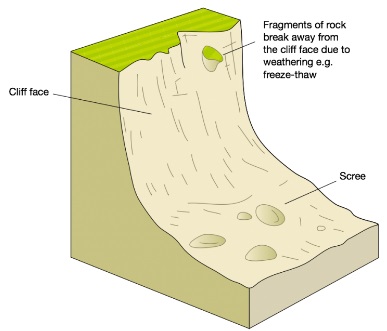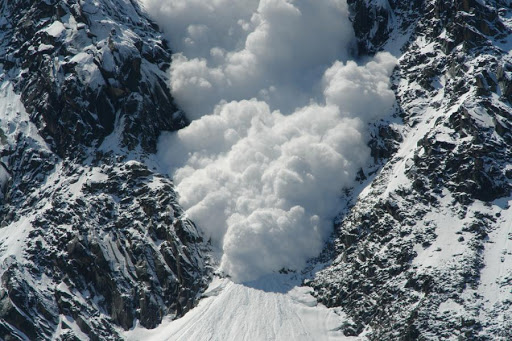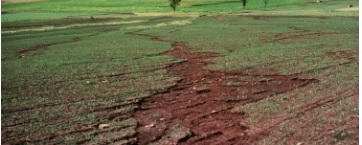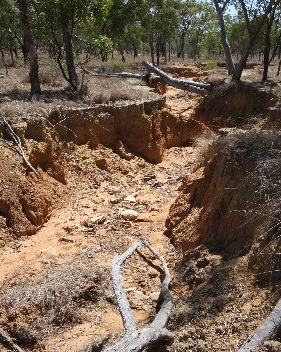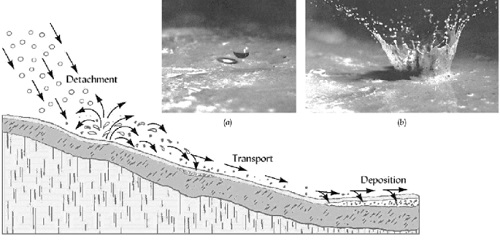- Physical break up of rocks without change in their chemical composition.
Processes
a) Block Disintegration/Separation
- Breaking of rocks into blocks along the joints.
- It‟s effective in arid areas because of great diurnal temperature range.
a. Day, well jointed rocks are subjected to intense heating causing minerals in it to expand.
b. In the night the rock is cooled causing it to contract.
c. The rock joints enlarge due to the alternating cooling and contraction.
d. The process is repeated over a long time causing the rock to disintegrate into blocks along the joints
e.g. Mundanda rock in Tsavo East.
 b) Exfoliation
b) Exfoliation
- Peeling off of layers of rocks.
- Also common in arid areas.
a. Day, rock surface is heated more than inner layers because rocks are poor conductors of heat.
b. The surface expands more than inner layers causing strain between the two layers.
c. With time outer layer develops cracks and later peels off and pieces of rocks fall down under gravity
e.g. along Mombassa-Nairobi road between Mtito Andei and Voi
 c) Granular Disintegration
c) Granular Disintegration
- Disintegration of rocks into grains.
- Occurs in rocks with different minerals.
a. When the rock is heated, different minerals expand differently.
b. Internal stress results and with time the rock disintegrates into grains.
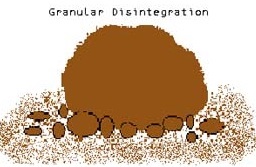 d) Pressure Release/Sheeting/Unloading
d) Pressure Release/Sheeting/Unloading
- Disintegration of rocks due to expansion when weight is removed from over it.
a. Soil and other materials lying on top of a rock are removed by erosion and mass wasting (denudation).
b. The exposed rock expands when the weight that was pressing it is removed.
c. The outer layer curves and eventually shells are pulled out from the rock.
d. The result is formation of a high rocky hills called granitic tors e.g. Maragoli and parts of Machakos.
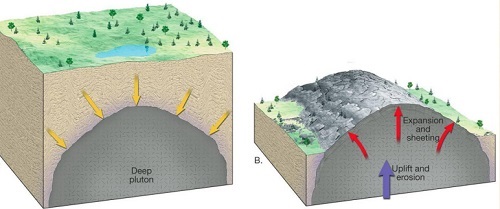 e) Frost Action
e) Frost Action
- Breaking of rocks into angular blocks due to repeated freezing and thawing.
- Common in temperate regions or mountainous regions of tropics where temperature fall below zero.
a. Water from melting ice collects into small cracks of rocks.
b. It freezes and expands and exerts pressure on cracks widening them.
c. Repeated freezing and thawing causes the rocks to break into angular blocks e.g. on Mt. Kenya, Kilimanjaro and Ruwenzori.
 f) Crystal Growth
f) Crystal Growth
- Break up of rocks due to crystal growth.
- It occurs in arid areas.
a. High rate of evaporation draws out moisture and dissolved minerals from the rock interior through
capillary action.
b. The moisture evaporates when it gets to the surface of the rock leaving behind crystals in the cracks and
pores of rocks.
c. The crystals continue to grow exerting pressure on the cracks or pores widening them and eventually
causing the rock to break down e.g. at Hells Gate near Naivasha.
g) Slaking/Rain Water Action
- Breaking up of sedimentary rocks due to alternate wetting and drying.
a. When it rains, the rock absorbs water and swells.
b. When dry season comes, the rock loses water and the outer surface shrinks.
c. The process is repeated and the minerals become loosely attached to another e.g. in Kenyan Coast at Tudor
and Miritini areas.






